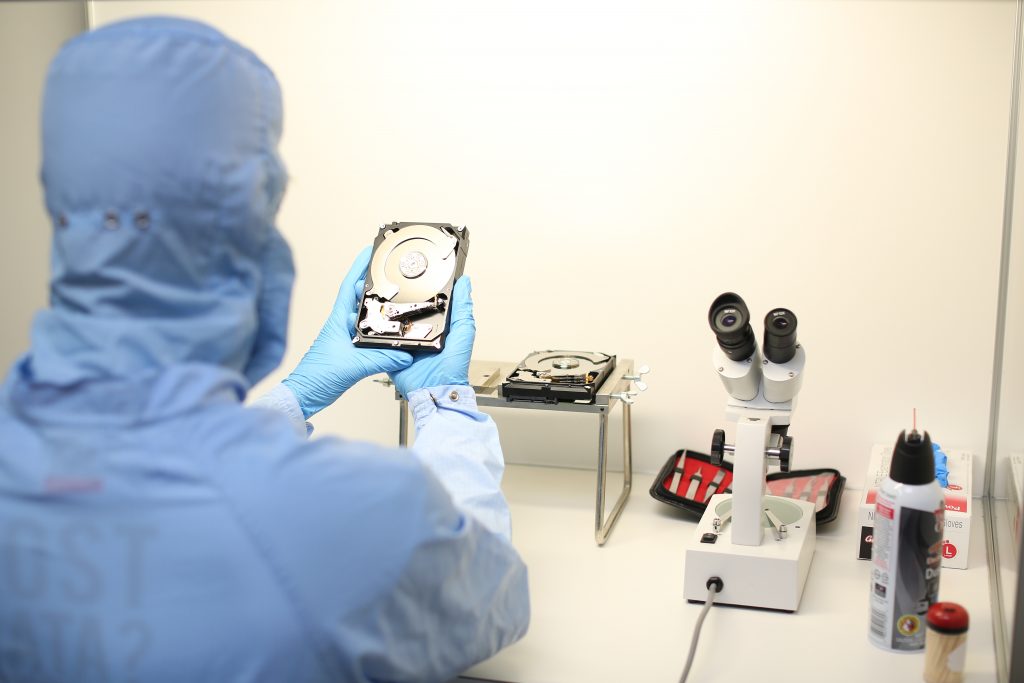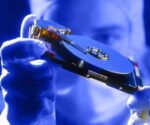Table of contents
Hard disk drives (HDD), or “hard drives” as they are more commonly known, are devices that store data and don’t lose it when the power goes out. HDDs are a type of storage device that can be found in laptops, desktop computers, external storage devices, enterprise storage arrays in different data centers, and other consumer electronic accessories.

Hard drives can store software programs, operating systems, pictures, videos, and other files on magnetic discs. Hard drives are very fragile and can be easily damaged by a simple drop. HDDs can be used either as the primary storage device in a computer or as an extra one. They are usually put in drive bays and connected to the motherboard through different interfaces.
A brief history of hard drive
IBM Corporation developed the first-ever commercial hard disk drive-based computer and named it RAMAC (Random Access Method of Accounting And Control). Its storage system was known as the IBM 350. This RAMAC was massive in size, occupying an entire room to operate. The hard drive storage system was about the combined size of two refrigerators, and fifty 24-inch platters were stacked inside.
RAMAC customers had less than 5MB of storage space since the marketing crew at IBM was against further expansion, seeing no way to convince the user base that they could require more than that. To access the privilege of these hard drives within IBM’s leased systems, customers had to fish out $3200 a month. While the hard drive technology was finalized in 1953, its shipping began later in 1956.
Hard drive’s components
The hard drive provides storage for data and applications in a computer and has four key components:
Platters
These are the circular discs within the hard drive where the binary 1s and 0s making up your files are duly stored. They are made of glass, aluminum, or ceramic and feature a magnetic surface to store data permanently. On bigger hard drives, various platters are used to heighten the overall capacity of the hard drive. All the data is stored on the sectors, tracks, and cylinder platters to keep it well-organized and easier to find.
Spindle
The spindle keeps the drive’s platters in position and, whenever required, rotates them. The revolutions-per-minute rating decides how fast the data can be written to and read from the HDD. An internal desktop drive typically runs at 7,200 RPM, though faster and slower speeds are also widely available. This spindle keeps the platters put at a fixed distance away from each other to ensure the read/write arm gains access.
Actuator arm and read/write heads
The actuator arm is in charge of the movement of the read/write heads that do the actual reading/writing on the disk platters by duly converting the magnetic surface into an electric current. The arm ensures the heads are in their proper position based on the data that has to be accessed/written. This is also known as the head arm or the actuator arm.
Note: One read/write head for each platter surface and floats 3 to 20 millionths of an inch over the platter surface.
Actuator
The actuator, or as it is commonly termed, the head actuator, is a small motor that receives instructions from the drive’s circuit board to manage and control the movement of the read and write arm and supervise the data transfer to and from the platters. It is responsible for ascertaining the read/write heads are always in the right place.
PCB
The PCB is located on the bottom of the hard drive and connects and controls various components, such as the spindle and read/write heads. The PCB has power and data connections. PCB works as a bridge between a hard drive and a motherboard.
Interfaces of hard drive
IDE
IDE or Integrated Drive Electronics is a standard electronic interface utilized between a motherboard’s data paths (alternatively called a ‘bus’) and the disk storage devices of a computer, such as HDD and CD-ROM/DVD drives. The official American National Standards Institute’s (ANSI) name for this interface is ATA (Advanced Technology Attachment).
SCSI
SCSI is a set of standard electronic interfaces that the American National Standards Institute has approved. These interfaces let personal computers communicate easily with hardware like discs, tape, CD-ROM drives, printers, and scanners. The current sets of SCSIs are parallel interfaces. They were made by the well-known Apple Computer and are still used in the Macintosh.
SCSI ports continue to be a built-in feature in personal computers today, gathering support from every major operating system. Along with the faster data rates, SCSI is comparatively more flexible than previous parallel data transfer interfaces.
SAS
Serial Attached SCSIs (SAS) are point-to-point serial protocols that handle data flow among computer storage devices like hard and tape drives. As the successor to Parallel SCSI, SAS uses the standard SCSI command-set. Lauded for its flexibility, SAS makes use of expanders and supports up to 65,535 devices.
Moreover, it is free from issues such as termination and clock skew. Being a point-to-point technology, resource contention issues do not cause issues in this interface. Lastly, SAS drives furnish relatively better scalability, performance, and reliability in storage applications.
SATA
Serial ATA (SATA) offers point-to-point channels between the motherboard and the drive. The cables in Serial ATA are much shorter in length than in Parallel ATA. It uses four-wire shielded cables that can be one meter in length at most. SATA cables are comparatively more flexible, thin, and smaller in size.
Types of hard drive
There are two types of hard drives: internal and external. Internal drives are the ones located inside the computer’s towers, laptops, all in one computers.
External hard drives are the same internal hard drives, but in plastic enclosures and can be powered by USB and power supply adapters. These external drives connect to computers or devices through interfaces such as USB 2.0, USB 3.0, USB-C, or external SATA (eSATA). External hard drives might have slower data transfer rates as compared to internal HDDs. Still, their primary advantages are their portability and their ability to expand a computer’s storage space. Users can store data from multiple computers and take external hard drives physically with them on the go.
Key take away
Hard disk drives (HDD) are storage devices that store data. Commonly found in laptops, desktop computers, enterprise storage arrays, and other consumer electronics.
The first-ever commercial hard disk drive-based computer was created by IBM in the 1950s, and the technology has since evolved to become smaller and more efficient.
The hard drive has four main components: platters, spindle, read/write heads, and PCB.
Hard drives have different interfaces, including SATA, IDE, SCSI, and SAS.
All hard drives will crash. It’s a given. To avoid data loss situations, it’s important to keep a backup of the data is essential.

